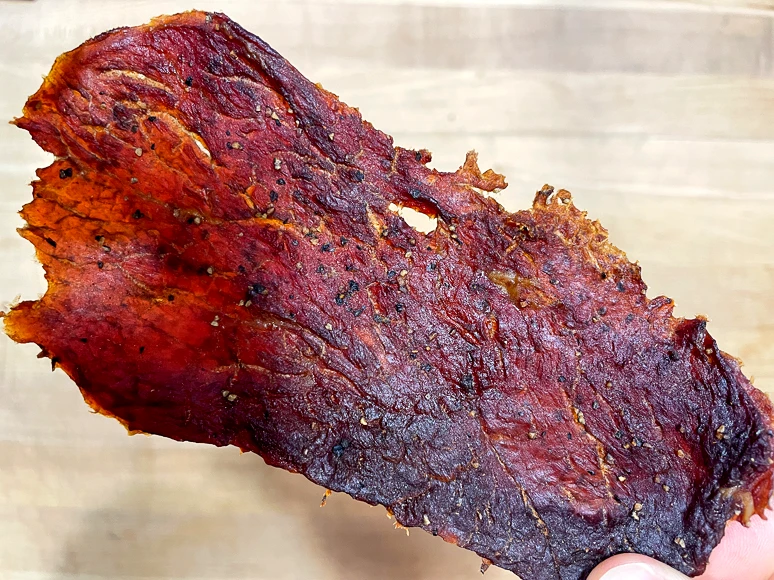A Gastronomic Odyssey: The Definitive Guide to Beef Jerky
July 3, 2024In the ordinary ranks of snacks, none is held in greater exaltation with such wide recognition as beef jerky. Thanks to its savoury taste, pliancy, and portability, beef jerky corroborates the idea that no fast food snack has more than the aesthetic features required for deep philosophical reflection. No wonder it has been transformed from its origins as a standby emergency food into a favourite snack that people enjoy worldwide. This article takes readers on a savoury journey into beef jerky. It explores the rich background, various forms, the benefits of dietary therapy provided by it alone, and socially meaningful traditions.
Origins and Evolution
The beef jerky story originates thousands of years into humanity’s history. Ancient civilisations required preservation techniques for survival. Regional tribes in North and South America also developed techniques for drying and seasoning meat to produce a light, nourishing food with a high nutritional content—a food they could survive on, whether on foot journeys through deserts or even arctic winters.
The early beef jerky formations were crude and functional. Thin pieces of meat were sprinkled with salt and spices, then sun-dried or smoked over the fire. As trade routes expanded, accordions opened up new areas of contact between cultures that had once been isolated from one another. Then, similar jerky-making forms began spreading across other continents and regions, each developing its own taste and techniques.
The Modern Day Production Process
Even though the basic principles of jerky-making remain unchanged, modern production methods have changed considerably to meet consumers’ more sophisticated palates. Generally, the process begins by selecting fine cuts of beef, such as lean sirloin or flank steak, and then cutting them into thin strips after excess fat has been removed. These strips are then marinated in a flavorful mixture of spices and herbs, salt, and often some sweetness from ingredients like brown sugar or honey.
Once marinated, the meat undergoes a controlled drying process that removes water and intensifies flavours, resulting in the toughening characteristic of jerky. Depending upon the producer’s preference and tradition, jerky may be air-dried, smoked, or oven-dried to achieve whatever texture and flavour they seek. After drying, the jerky is cooled and then packed or sealed so it sticks to maintain freshness until it reaches the consumer.
Flavour Profiles
One of beef jerky’s most fantastic aspects is its wide variety of flavours and forms. From old-fashioned original flavours like teriyaki and pepper to spicy or rough new ideas such as wasabi and chilli-bourbon mixes, every taste is catered for. Manufacturers also offer things other than the standard plain beef jerky, such as turkey with herbs and spices, pork and chicken; furthermore, they join elk, bison and even lovely dining in ostrich onstage to feed a wide range of tastes and dietary needs.
The flavour possibilities are as endless as those of the people producing them. Inspired by the importation of oriental noodle dishes to Britain, those making jerky often think in global terms. Some take ingredients from all over the world and adopt worldwide-flavoured production methods; others serve local foods in this manner. In any case, the object is to find the best jerky flavour to suit your taste.
Nutritional Benefits
Besides a delicious flavour and a way to pack nutrition with you anywhere, beef jerky provides several nutritional benefits that its healthy consumers particularly appreciate. Jerky is rich in protein, which is necessary for the formation and repair of muscles and for overall health and vitality. In addition, beef jerky is low in fat and carbohydrates, satisfying consumers following low-carb or ketogenic diets.
Furthermore, beef jerky is an easy way for busy individuals who are always on the go to grab substantial and satisfying food. With its long shelf life, lightweight packaging, and durability, jerky is the perfect snack choice to take along anytime. Throw it in a backpack, purse, or gym bag, and you are ready for hunger emergencies or an energy kick. Chewing jerky can also help satisfy cravings and reduce hunger, making it a delicious alternative to less healthy snacks.
Cultural Significance
In addition to being an everyday food full of nutrients, beef jerky has different cultural meanings in many parts of the world. In the US, beef jerky has made its name alongside road trips, campfires, and the great outdoors as a snack for travellers and sustenance for expeditions to consume. In the same way, in countries such as South Africa and Australia, dried-meat products like biltong or kangaroo jerky are deeply rooted in traditional culture and are the national pride and joy.
DIY Jerky: A Delicious and Healthy Way to Snack
While commercial beef jerky may be very convenient and varied, most enthusiasts prefer to prepare a small amount. By making your bulk jerky, you have complete control over all the ingredients and taste, and you can experiment with various cuts of meat and spice combinations. With a dehydrator or oven and a little practice, you can turn out homemade jerky that suits your tastes—fresh and free of preservatives or other “nasties.” The result is as satisfying to make as it is to eat.
Conclusion
Beef jerky has stood the test of time as an ageless treat that people of any walk like. From its beginnings as emergency food right through to the gourmet snack it’s become today on a global scale, beef jerky is not only the past tense of calamity but a mouthwatering and nutritious culinary delight. Whether consumed on the trail, in the gym or simply as a refreshing bite at home, beef jerky continues to surprise and please snack fans everywhere. So grab a bag, taste the flavour, and pick up the best beef jerky. Match the taste today!



